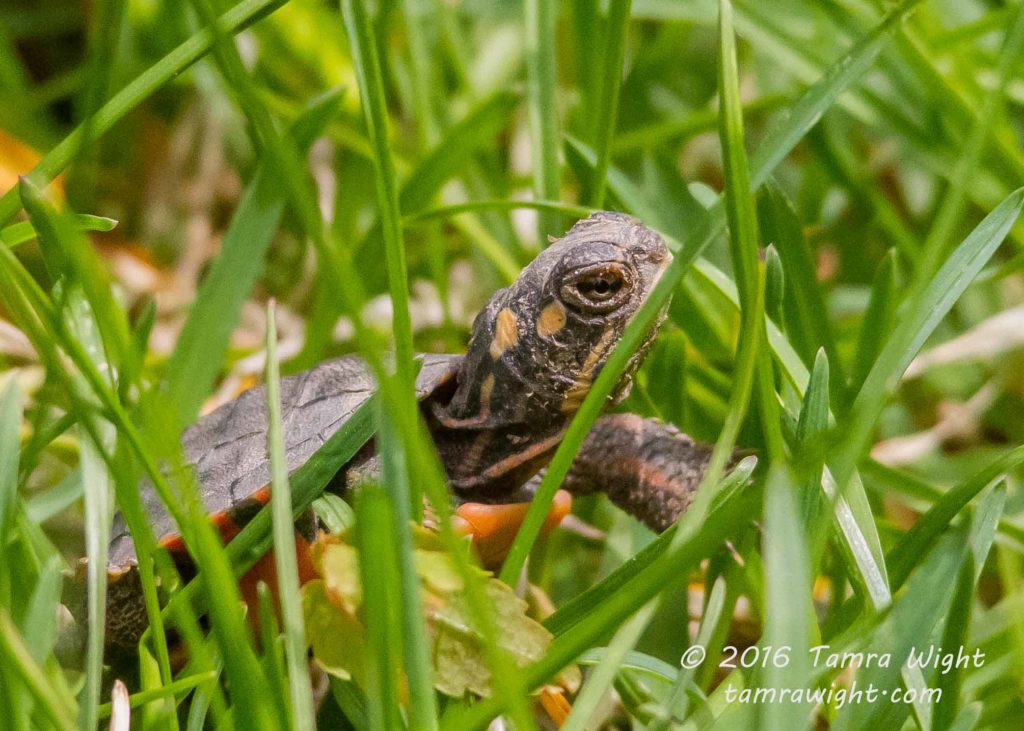Find a Turtle Far From A Lake? Let It Be!
Painted turtles’ bright red and yellow markings make them fun to photograph, especially when you get reflection photos in the water.
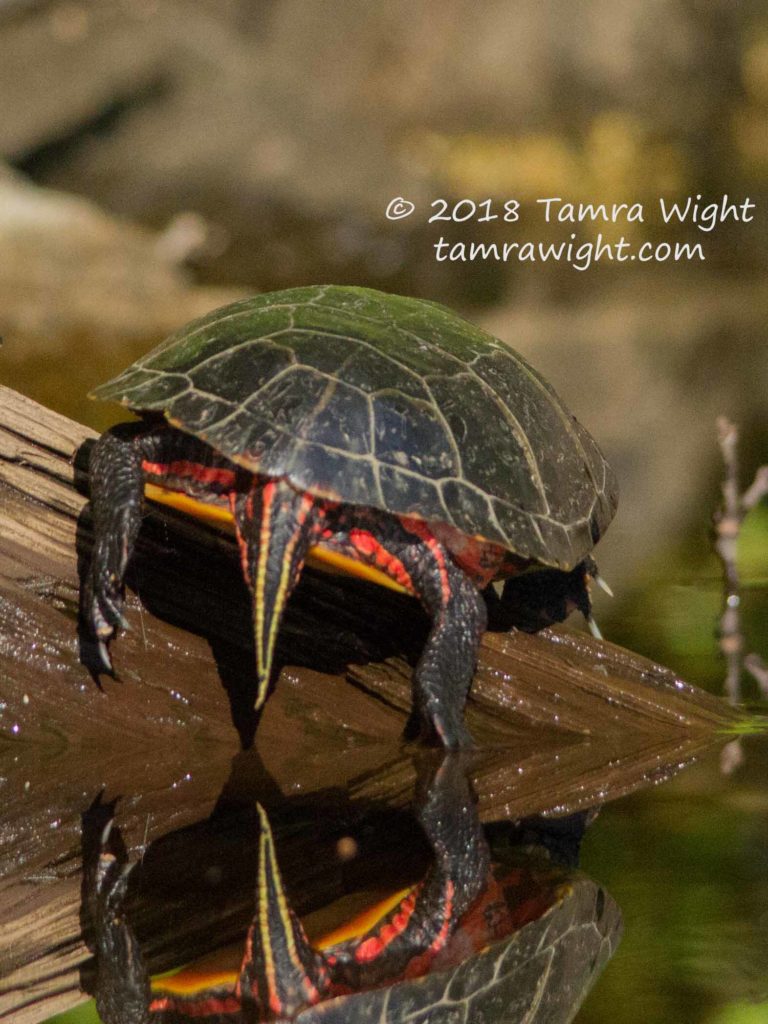
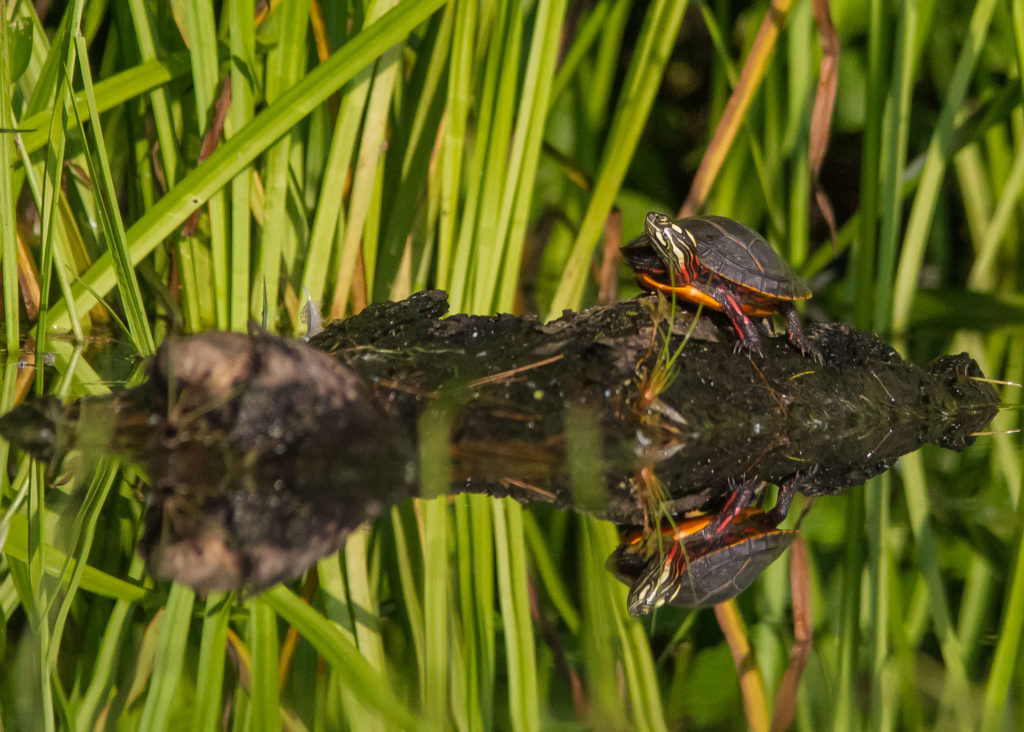
They’ll grow to 4 to 10 inches and have smooth shells.
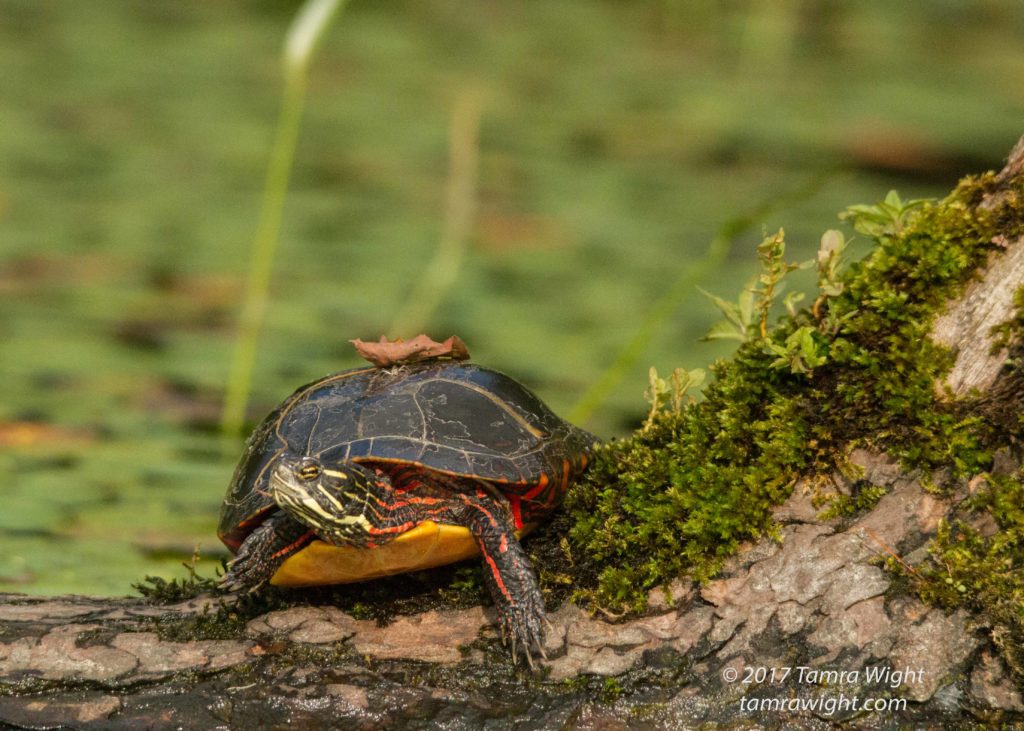
They live in ponds, lakes, marshes, and in slow-moving rivers that have soft, muddy bottoms. You’ll find them out and about during the day, usually sunning themselves on a rock or log. At night they will rest on the bottom of a pond or on a rock or tree that is partly underwater.
What do they eat? Mostly plants and small animals, like fish, crustaceans, and water insects. Painted turtles eat in the water. They don’t have teeth. Instead, they have sharp ridges, kind of like really rough sandpaper, on their upper and lower jaws. This helps them grip the food.
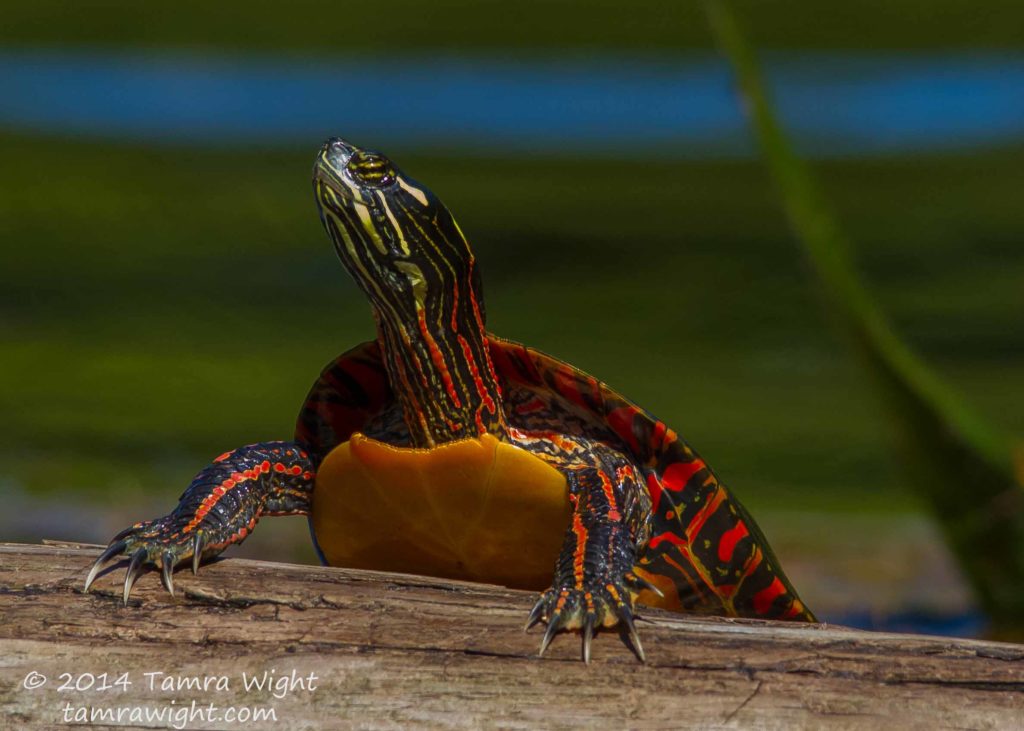
Every now and then, I’ll see six or more turtles sunning themselves together! A group of turtles is called a ‘a bale of turtles’. They use touch to communicate with each other.
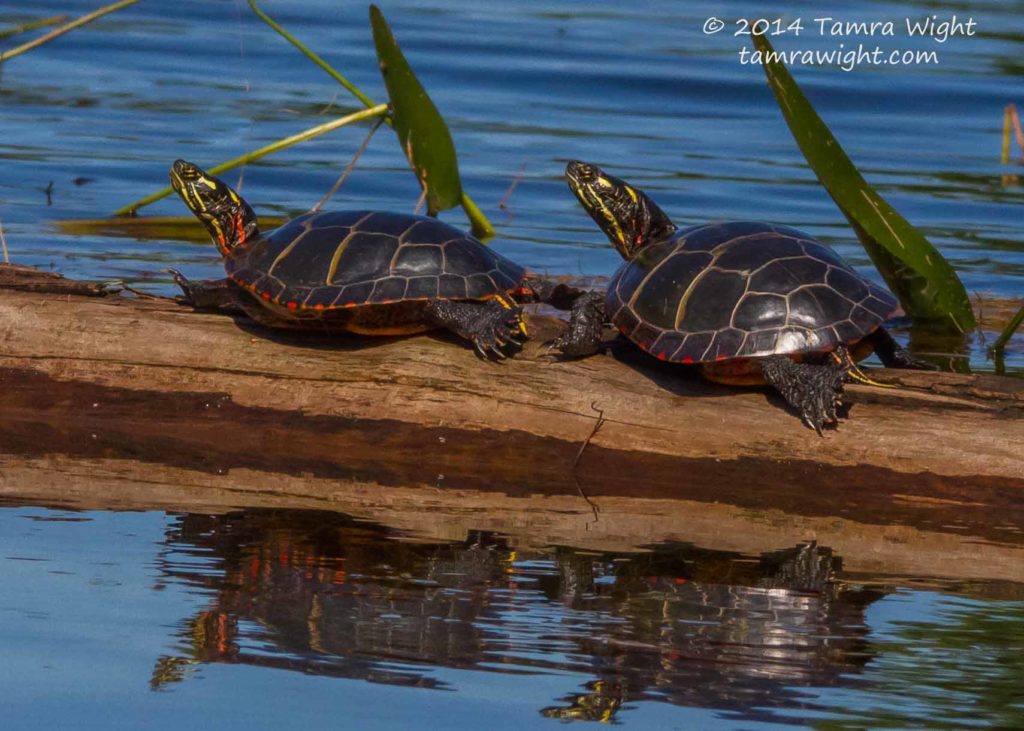
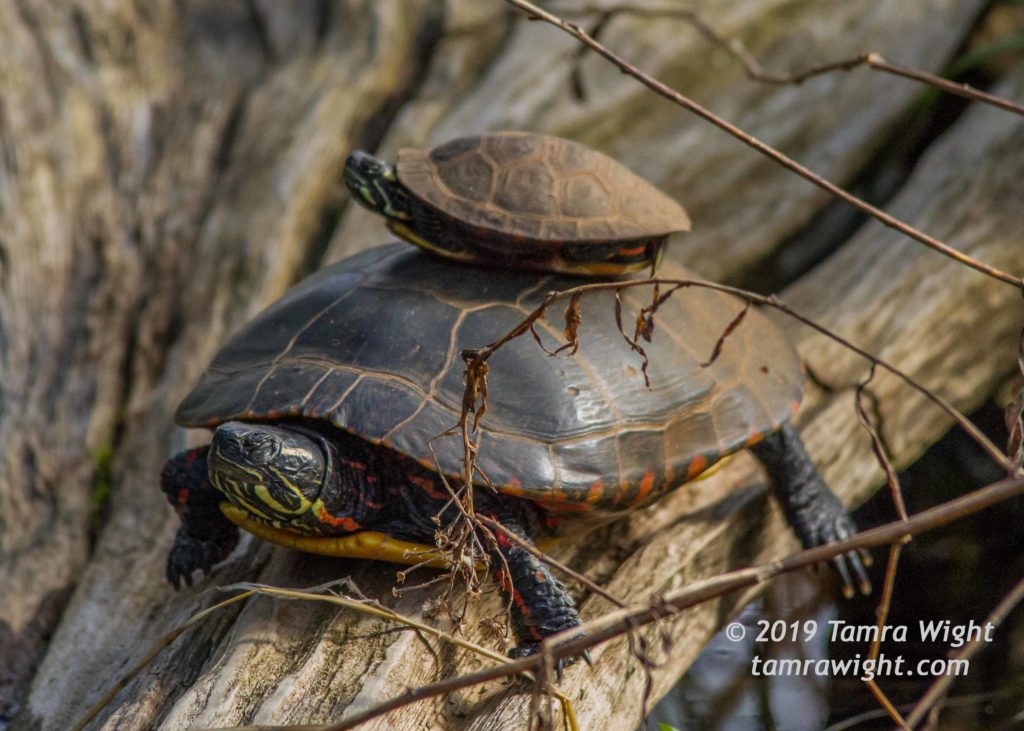
Raccoons, otters, mink, foxes, and other medium-sized animals will prey on small turtles and their eggs. I’ve even seen a heron quickly snatch one out of the water with its long beak!
Painted turtles carefully watch for predators. Maybe you’ve been kayaking or walking along the water’s edge and heard several PLOPS or SPLASHES in a row? Chances are you scared a bunch of turtles back into the water where they can hide. If on land, they’ll pull their head and legs into their hard shell.
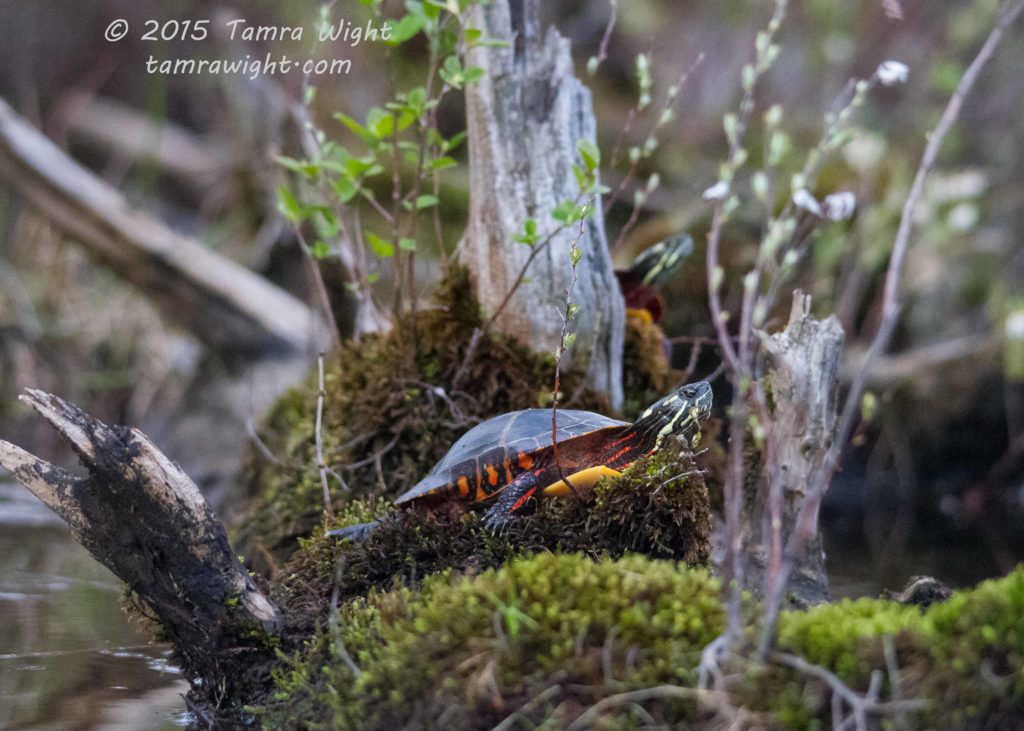
Here in Maine, painted turtles lay their eggs in May and June. They look for a spot with lots of sun and one that is easy to dig into.
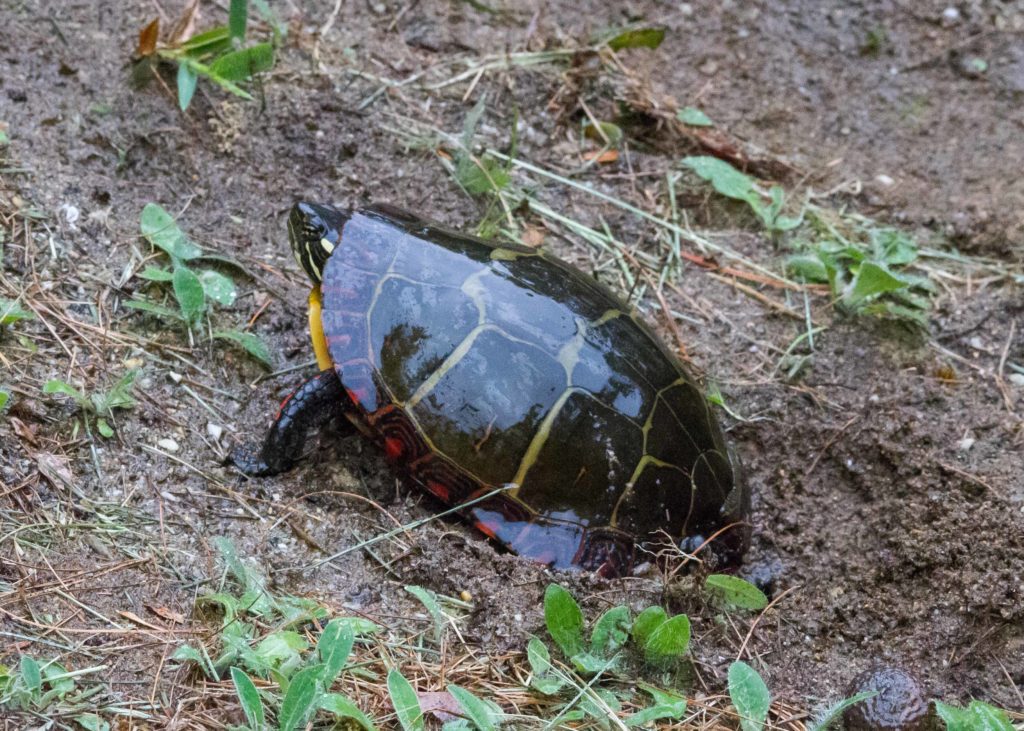
In these photos, she was laying eggs on the edge of our campground’s playing field. To get there, she walked 300 feet, uphill! So if you ever see a turtle walking away from a lake, leave it be. It’s not lost! Help it on its way if you must, but don’t take it back to the lake. It will just have to make the trip all over again.
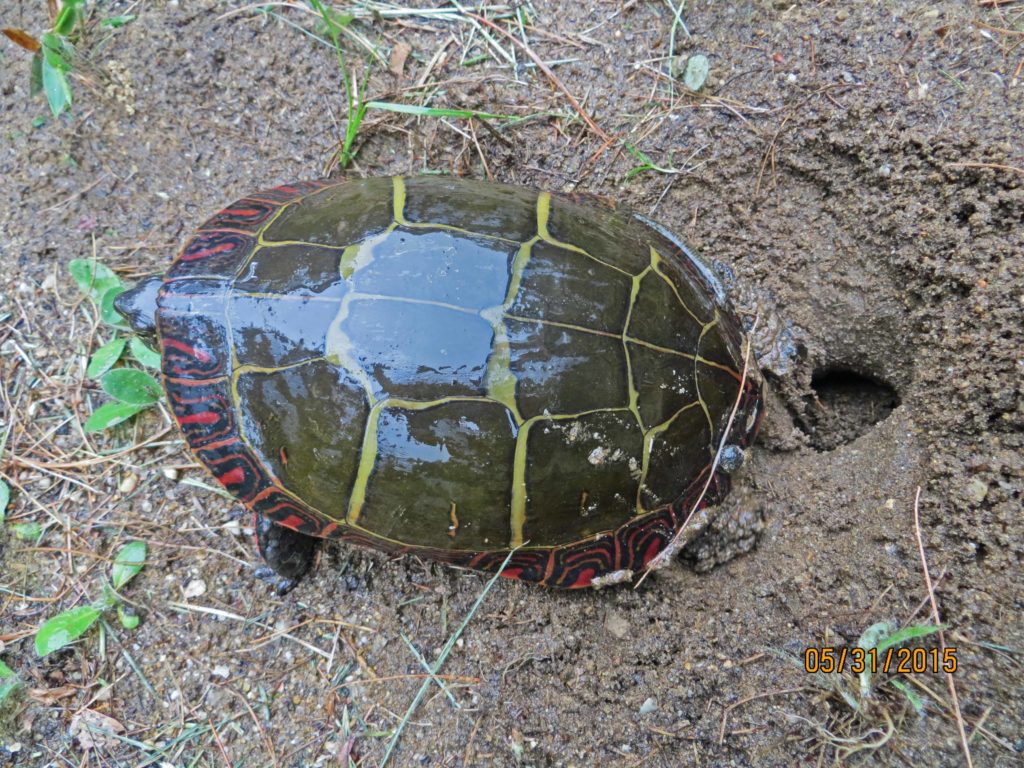
Using her hind feet, a female turtle digs a hole about four inches deep. In it, she lays 4 to 8 soft, oval-shaped eggs, then she covers them up with dirt.
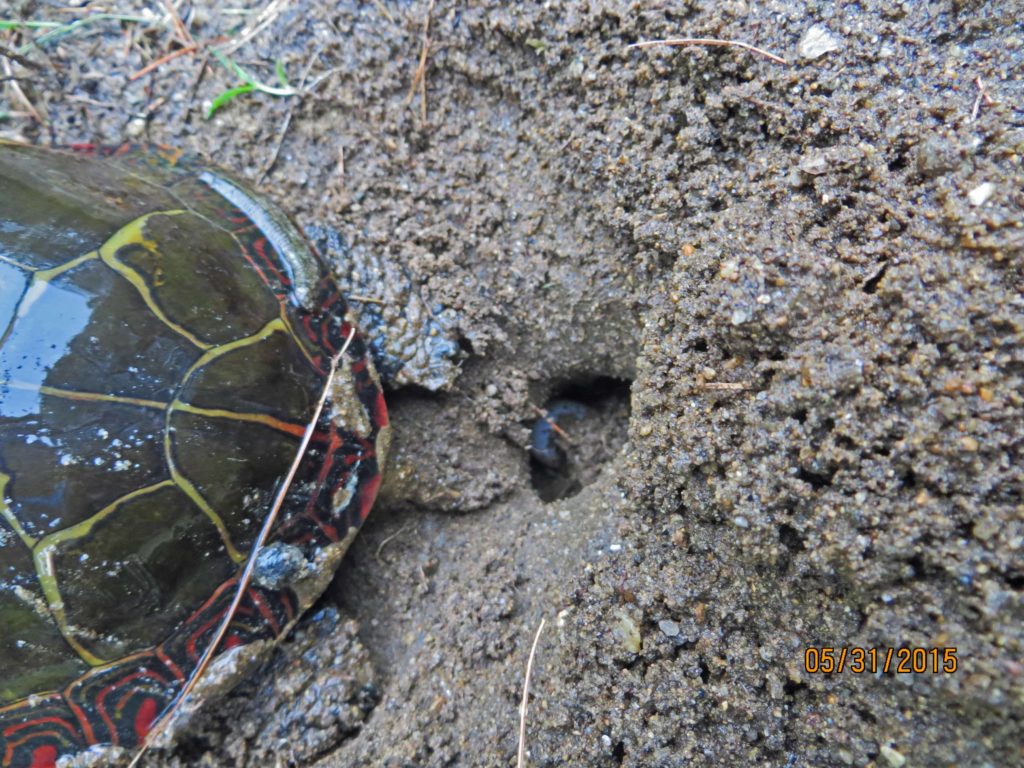
If the eggs are in a warmer nest over the months they lay there, all the turtles hatched from it will be females. A cooler nest, will create all males. The young hatch in late August or early September and right away, without an adult, they begin a dangerous hike back to the water their mother came from.
Again, if you see little turtles wandering around far from the water, watch over them if you must, but let them travel where they need to.
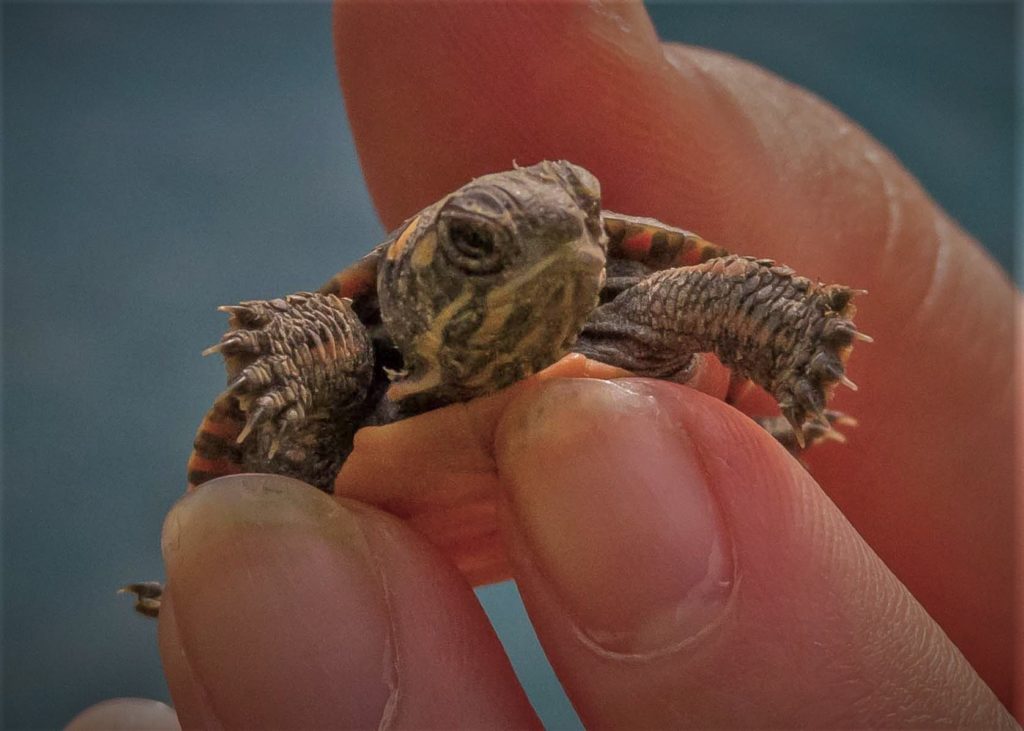
The compass inside them will tell them where they need to go. They’ll get there as fast as they can!
